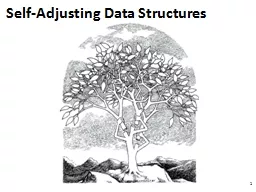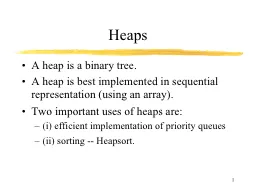PPT-Priority Queues and Heaps
Author : phoebe-click | Published Date : 2016-06-22
Lecture 19 CS2110 Spring 2014 1 Readings and Homework Read Chapter 26 to learn about heaps Salespeople often make matrices that show all the great features of their
Presentation Embed Code
Download Presentation
Download Presentation The PPT/PDF document "Priority Queues and Heaps" is the property of its rightful owner. Permission is granted to download and print the materials on this website for personal, non-commercial use only, and to display it on your personal computer provided you do not modify the materials and that you retain all copyright notices contained in the materials. By downloading content from our website, you accept the terms of this agreement.
Priority Queues and Heaps: Transcript
Download Rules Of Document
"Priority Queues and Heaps"The content belongs to its owner. You may download and print it for personal use, without modification, and keep all copyright notices. By downloading, you agree to these terms.
Related Documents














